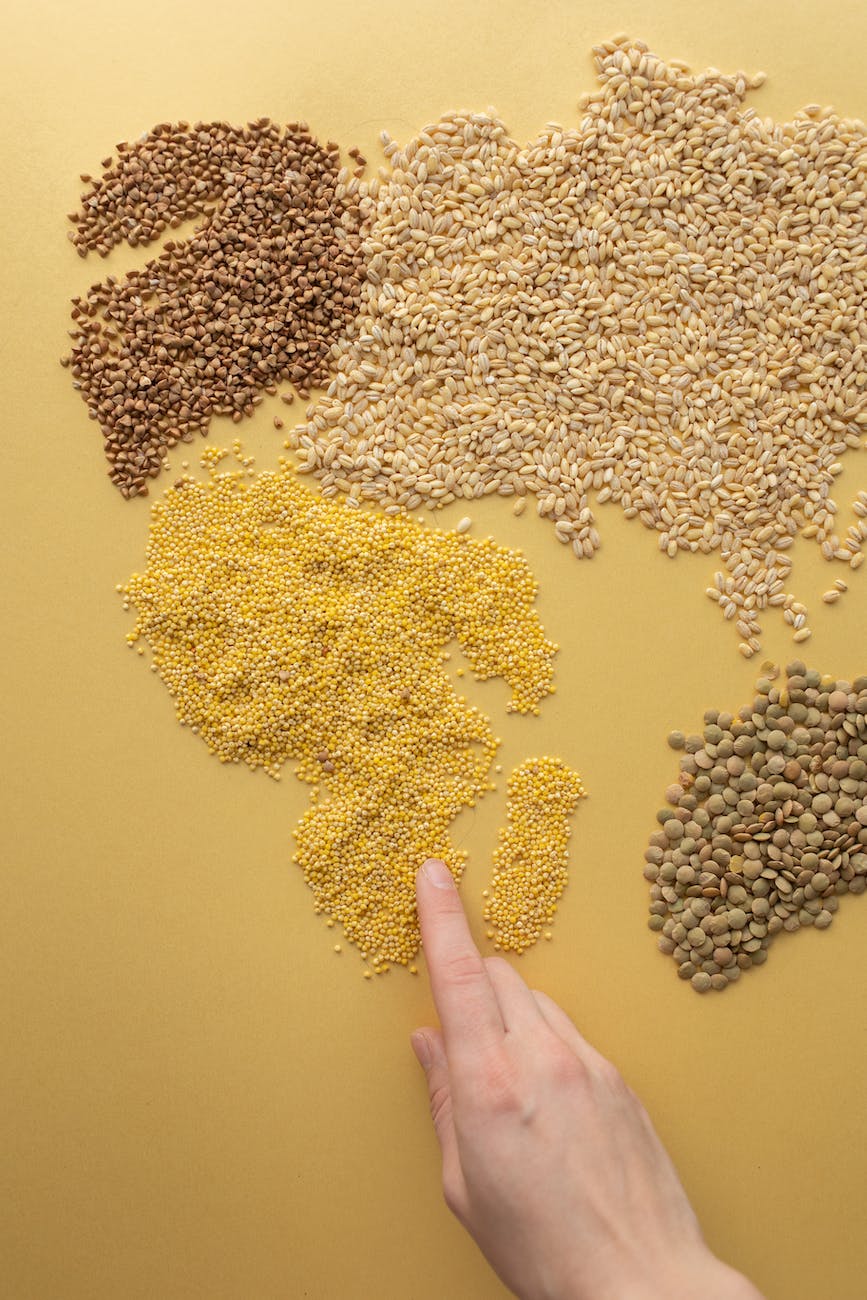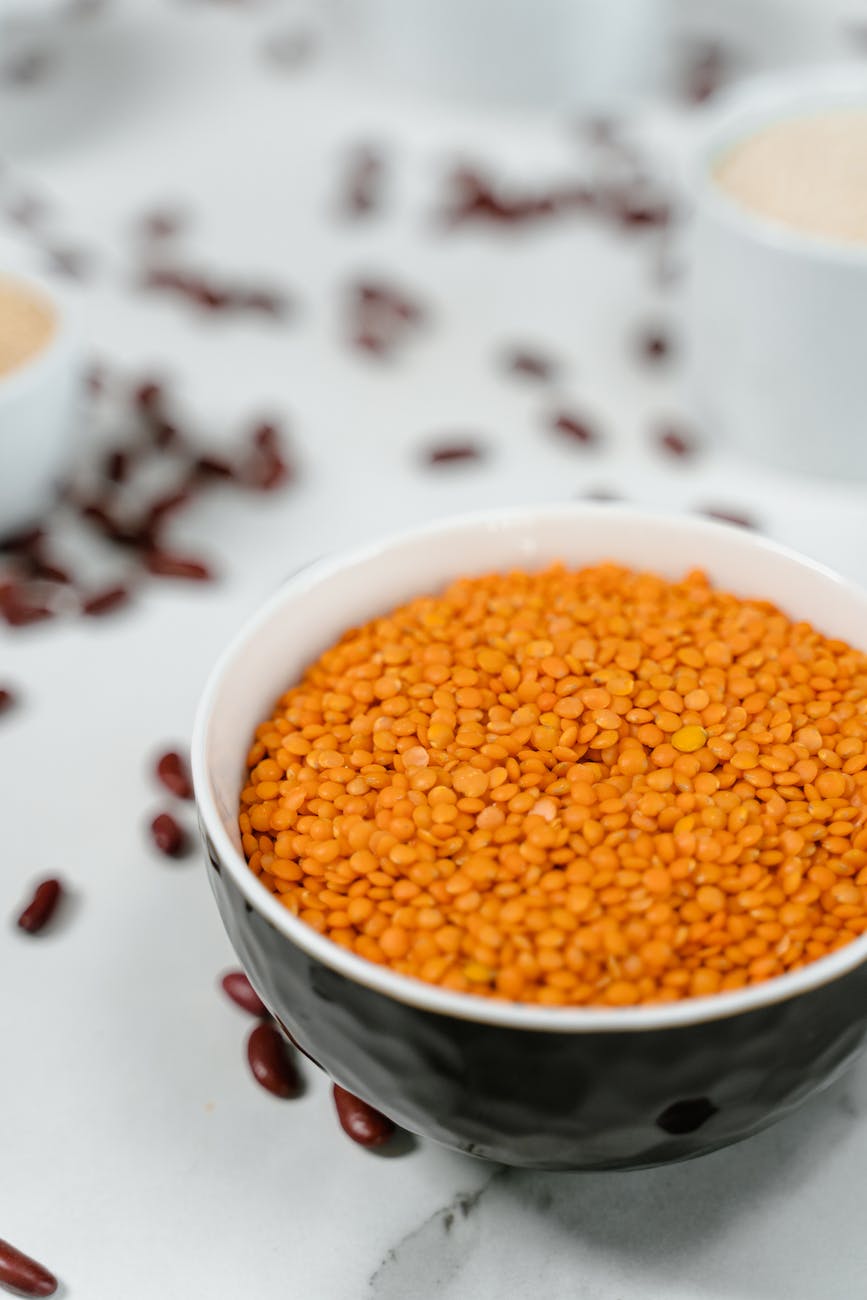
Elevate your pasta game with these tempting lentil-based dinner meal prep ideas that are both nutritious and delicious. Lentils, a protein-packed legume, bring a hearty and satisfying element to your pasta dishes. Embrace the power of plant-based protein and dive into these lentil pasta creations that will keep you fueled and nourished. Get ready to tantalize your taste buds and experience the wonders of a plant-powered dinner.🌿🍝🌱
🍝 Lentil Bolognese: Indulge in a rich and flavorful lentil bolognese that will satisfy your pasta cravings. Start by sautéing onions, garlic, and carrots until softened. Add cooked lentils, diced tomatoes, tomato paste, and a blend of Italian herbs like oregano, basil, and thyme. Let the sauce simmer until it thickens and the flavors meld together. Serve this lentil bolognese over your favorite pasta, whether it’s spaghetti, penne, or fusilli, and garnish with fresh basil and a sprinkle of vegan Parmesan cheese. This protein-packed lentil-based pasta sauce is a wholesome and satisfying alternative to traditional meat-based sauces.
🌱 Lentil Pesto Pasta: Experience the vibrant flavors of lentil pesto pasta, a fresh and herbaceous dish that celebrates the goodness of plant-based ingredients. Cook lentils until tender, then blend them with fresh basil, garlic, pine nuts, olive oil, and a squeeze of lemon juice to create a flavorful and protein-rich pesto sauce. Toss the cooked pasta of your choice with the lentil pesto sauce, adding in some sautéed cherry tomatoes and spinach for extra color and nutrients. Garnish with a sprinkle of toasted pine nuts and a drizzle of olive oil for the perfect finishing touch.
🥦 Lentil and Broccoli Alfredo: Enjoy a creamy and comforting lentil and broccoli Alfredo pasta that is both satisfying and nutritious. Cook lentils and sauté broccoli florets until tender. In a separate pan, prepare a creamy Alfredo sauce using plant-based milk, nutritional yeast, garlic, and a touch of flour to thicken. Combine the cooked pasta, lentils, and broccoli with the Alfredo sauce, ensuring every bite is coated in the creamy goodness. Serve this indulgent lentil pasta dish with a sprinkle of freshly ground black pepper and some chopped parsley for a burst of freshness.
🌿 Lentil Caprese Pasta Salad: Create a refreshing and vibrant lentil Caprese pasta salad that is perfect for summer evenings. Cook lentils until tender, then combine them with cooked pasta, halved cherry tomatoes, fresh mozzarella balls, and torn basil leaves. Drizzle with a balsamic vinaigrette made from balsamic vinegar, olive oil, Dijon mustard, and a touch of honey or maple syrup. Toss everything together, allowing the flavors to meld and develop. This protein-packed lentil pasta salad is a satisfying and nutritious option for picnics, potlucks, or a light dinner.
🍅 Lentil Arrabbiata Pasta: Spice things up with a fiery lentil arrabbiata pasta that will ignite your taste buds. Cook lentils until tender and set aside. In a pan, sauté onions, garlic, and red pepper flakes in olive oil until fragrant. Add diced tomatoes, tomato paste, and a splash of red wine (optional) to create a zesty arrabbiata sauce. Stir in the cooked lentils and let the sauce simmer until the flavors meld together. Toss the cooked pasta with the lentil arrabbiata sauce, ensuring every strand is coated in the spicy goodness. Garnish with fresh parsley and a sprinkle of vegan Parmesan cheese. This lentil arrabbiata pasta will add a punch of flavor and protein to your dinner table.
Embrace the goodness of lentils and the versatility of pasta with these lentil-based dinner meal prep ideas. Incorporate lentils into your pasta dishes for a plant-powered protein boost and a satisfying meal. Don’t forget to capture your creations and share them with us! 📸 Tag your lentil pasta dishes with #MasalaMonk and @Masala.Monk on Instagram or Pinterest to join our community of food enthusiasts.
Save this post for future meal prep inspiration and explore the endless possibilities of lentil-powered pasta dinners that are both mouthwatering and nutritious.













